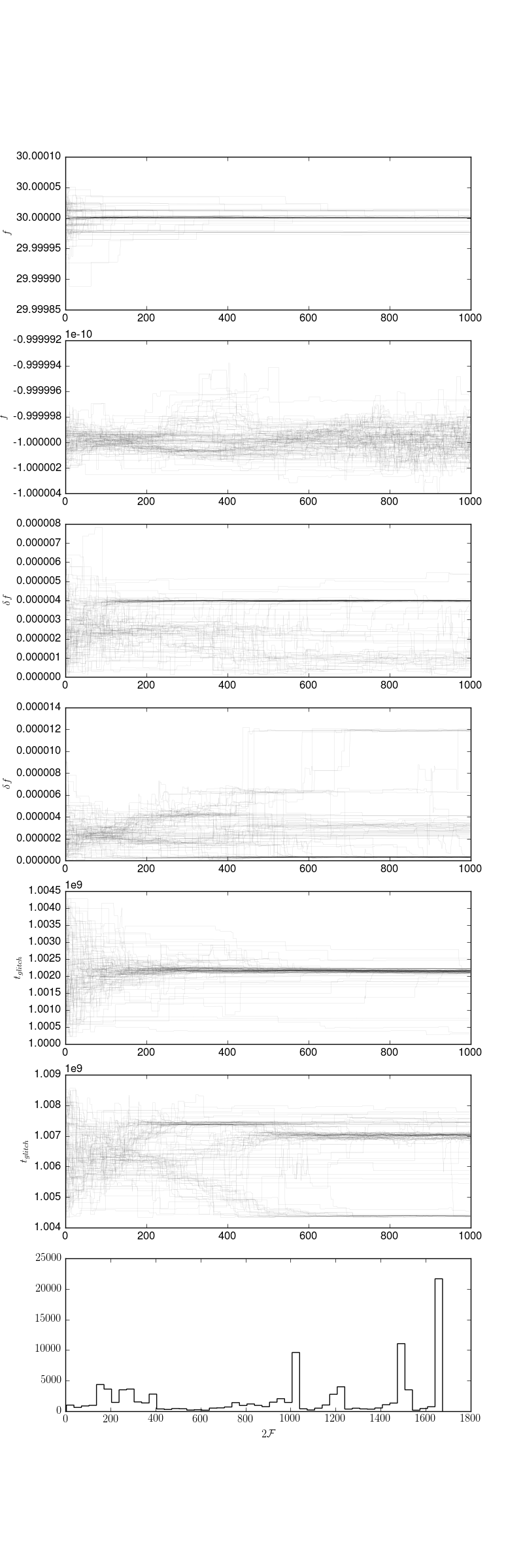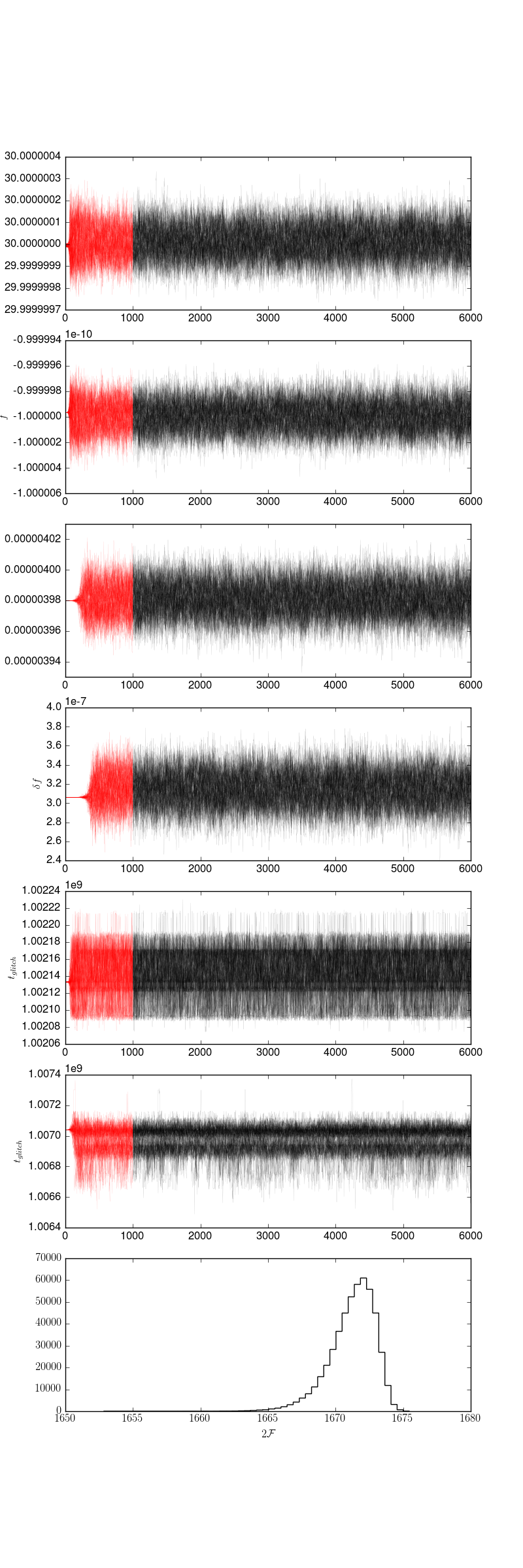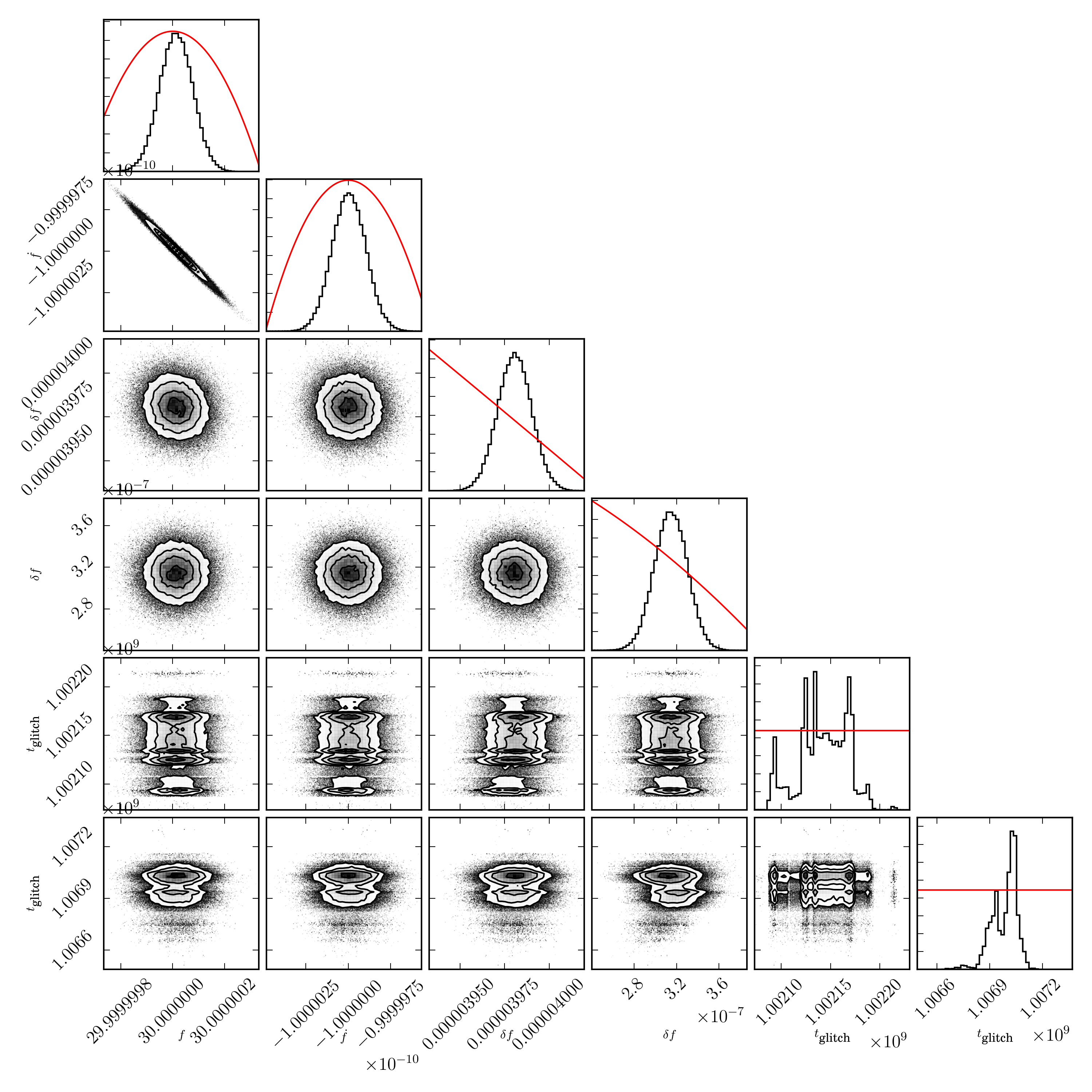Semi-coherent glitch search on data with two-glitches using MCMC
In this example, based on this script, we show the basic setup for a two-glitch search. We begin by defining the prior:
import pyfstat
F0 = 30.0
F1 = -1e-10
F2 = 0
Alpha = 5e-3
Delta = 6e-2
tref = 362750407.0
tstart = 1000000000
duration = 100*86400
tend = tstart + duration
theta_prior = {'F0': {'type': 'norm', 'loc': F0, 'scale': abs(1e-6*F0)},
'F1': {'type': 'norm', 'loc': F1, 'scale': abs(1e-6*F1)},
'F2': F2,
'Alpha': Alpha,
'Delta': Delta,
'delta_F0_0': {'type': 'halfnorm', 'loc': 0,
'scale': 1e-7*F0},
'delta_F0_1': {'type': 'halfnorm', 'loc': 0,
'scale': 1e-7*F0},
'delta_F1_0': 0,
'delta_F1_1': 0,
'tglitch_0': {'type': 'unif',
'lower': tstart+0.01*duration,
'upper': tstart+0.5*duration},
'tglitch_1': {'type': 'unif',
'lower': tstart+0.5*duration,
'upper': tstart+0.99*duration},
}
Note that, in this case, we define a prior for each of the two glitches.
Alternatively, one can provide a prior (with no indexing) which is applied to
all glitches. The sampler has a prior specification to sort the glitches such
that tglitch_0 < tglitch_1 < ....
The outputs plots:


